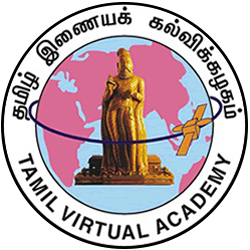Primary tabs
-
From this lesson you can learn about the circumstances which lead to changes in a language, the changes which occur in the sounds, and the manner in which they occur, both in the spoken and written forms. The Tamil language has a long history. Like English, we can divide Tamil into Old Tamil, Medieval Tamil and Modern Tamil.
During the 20th century, the advent of the radio, newspapers, text-books designed with the view of ‘education for all’, science education in Tamil, and the sweep of the powerful mass media like the Cinema and Television, have all resulted in the spread of a Standard Dialect. This lesson gives you all the information about 20th century Tamil, which includes this Standard Dialect.
At the beginning of the 19th Century, Christianity began to spread fast in Tamil Nadu. The most important impact of the arrival of the foreigners in Tamil Nadu, was their introduction of the printing machine. Due to this foreign influence, innovations and novelty were seen in many fields such as short stories, fiction, newspapers, and Tamil prose in general.
Tamil prose developed rapidly due to foreign influences. New technical terms, grammatical features, sentence structures and additional verbs appeared in Tamil. Scholars have conducted reaerach on 20th century Tamil.
In 20th century Tamil, voiced stops became individual sounds. This is a significant development. This is due to the impact of words from other languages. For example, GURU, BAVAM. The use of voiced stops is more common smong urbanites rather than rural folk.
Many changes also took place during the 20th century, due to assimilation, derivation of nouns and the appearance of the Honorific Singular. The Honorific singular was used to indicate a person’s status in society. Certain words were added to verbs and used in spoken and written Tamil. This again is a significant feature of modern Tamil. For example, cheyyapokiran, vanthu kondiruntaal.
Thus, this lesson gives you a lot of interesting information about 20th century Tamil.முன்


